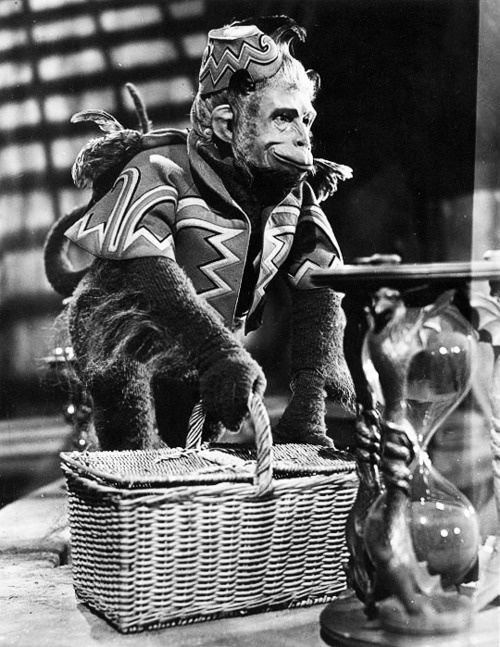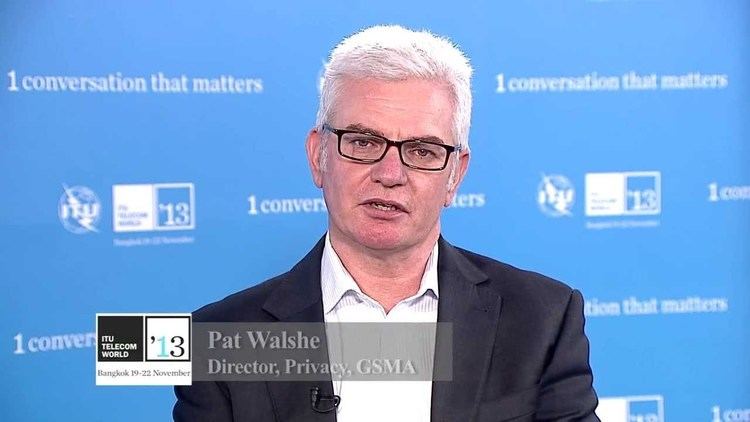Cause of death Heart attack Role Actor Name Pat Walshe | Height 3 ft 8 in (112 cm) Years active 1939-1950 Movies The Wizard of Oz | |
 | ||
Occupation Actor, Animal impersonator Resting place Westwood Village Memorial Park Cemetery Similar People Clara Blandick, Charley Grapewin, Bert Lahr, Jack Haley, Billie Burke | ||
Pat Walshe, Director , Privacy, GSMA - Session summary ITU Telecom World 2013
Patrick Walshe (July 26, 1900 – December 11, 1991) was an American dwarf character actor and circus performer who specialized portraying animals (animal impersonating). He is best known for playing Nikko, the head of the Winged Monkeys in The Wizard of Oz. He appeared in only a few films, as most of his work was in theater, vaudeville and circus.
Contents
- Pat Walshe Director Privacy GSMA Session summary ITU Telecom World 2013
- Life and career
- Death
- Early theater appearances
- Filmography
- References

Life and career

Walshe was born as Patrick Walshe, on July 26, 1900, in New York City. Living his early years in Brooklyn, Walshe suffered from a form of restricted growth, and as a result never grew to be taller than 3'10".

Performing came to him young, appearing in various vaudeville shows and circuses. In 1910, Walshe appeared in the Ringling Brothers Circus, a circus run by the famed five Ringling Brothers siblings. In the following years, Walshe appeared in the Broadway shows; Hell and Lew Fields' Bunty, Bulls and Strings, in which he played "Mr MacGregor", a Scottish farmer. In 1913, Walshe heard that the American Play Company where producing a performance of Within the Law, consisting entirely of a cast of dwarf actors, and he wrote to them hoping for a part. The same year, Walshe appeared in the Broadway production A Good Little Devil, starring Mary Pickford. In this production Walshe played the roles of a gnome called "Huggermunk", and also squirrel. During 1914, Walshe spent time with the Frank A. Robbins Circus.

Many of Walshe's performances included playing animals, particularly monkeys or apes. Eventually Walshe began to specialize in performing monkeys, which gained him popularity on the vaudeville circuit, appearing in such events as Lew Fields's and Joe Weber's Reunion show. Appearing in many variety shows, Walshe earned prominence for his performances and received him the nickname; 'the monkey man'. Of particular note was the meticulous attention to detail that Walshe gave to his performances. Walshe would spend time visiting the zoo, and studying the movement of the apes. Walshe had much fascination with the creatures putting significant effort into successfully mimicking not only the monkey's physicality but also impersonating the sounds that they made. Walshe was even allowed by the zookeeper (who he was friends with) to enter the cages of the apes, to spend time close up with them. Walshe's performances were perfected to such a degree of accuracy that, when wearing his costume, he allegedly was able to convince a particular chimp, that he was in fact an ape, scaring the creature.
Rather than gluing fur to his body, Walshe had a costumer make a special fur suit for him. However, Walshe dealt with the makeup himself. With grey paint, he used highlights and shadows, as well as protruding false teeth and a wig to transform himself into a monkey. Walshe often worked directly with apes, which was dangerous work due to the unpredictable nature of the creatures. Though Walshe was well acquainted with them, having an in-depth knowledge of ape psychology as well as being naturally comfortable around them.
In addition to working with live apes, simply to mimic their movements, Walshe also performed with them. One of his best-known performances was alongside the trained chimp, Baldy, of which he was the custodian of for several years. Walshe and Baldy appeared together in many shows, with a particular act, amongst other stunts, including the two of them riding a two-seated bicycle. Working with Baldy's trainer, the two of them spent weeks inside Baldy's cage, to help prepare her for the performance, as well as simply studying her behavior. He had a close bond with Baldy, and was known to carry around a picture of her in his pocket. Walshe, admitted his admiration for Baldy, who he described as "the most intelligent of all performers of the animal kingdom".
Throughout the 1920s, Walshe had earned a reputation for his act. At one point, Walshe did work as a businessman, though he found be a little person and having to do business with average sized people, considerably difficult. His business was unsuccessful and after a period of illness Walshe's career as a businessman ceased, so he stuck with performing, In 1928, Walshe was enlisted to appear in Rain or Shine, at the George M. Cohan Theatre, starring Joe Cook. The Broadway musical, centered on a circus, and Walshe was cast in the production due to his prior knowledge of circus performing. In the show, Walshe appeared alongside fellow circus performers, Fred Gregory (a noted acrobat for Barnum and Bailey) and Dave Chasen (later famous for Chasen's). All three had extensive experience appearing in circus and carnivals, unlike many of the principal cast. The three of them performed a circus act during the show that consisted of various acrobatics and stunts. Walshe portrayed the role of marmoset, and one part of the act included him being propelled from end of a pole. Despite their prominence in the show, neither Gregory nor Walshe were credited in the show's program, but did receive billing on the posters and were mentioned in press releases.
Walshe continued to perform on the stage in vaudeville, variety shows, circuses as well as Broadway productions, for the rest of his career. From 1930 to 1931, Walshe appeared in a production of Fine and Dandy (featuring the song Fine and Dandy), once again with Joe Cook with whom he worked previously with in 1928 for Rain or Shine. Walshe appeared alongside another dwarf actor named Hermon Ergotti, a German standing 3'8". Ergotti and Walshe portrayed "The Colt", with Walshe also doubling as "J. Newton Wheer". In 1936 he appeared in a performance, known as the 'midget Tarzan', with Joe Cook again.
On October 4, 1938, Walshe was cast in the most prominent role of his career. He was to make his feature film debut in The Wizard of Oz. Due to Walshe's recognition for novelty performances dressed as animals and his expressive movement, Walshe was awarded the role of Nikko, the head of the Winged Monkeys. Unlike the other monkeys, Nikko was a featured role, serving as the Wicked Witch's (played by Margaret Hamilton) second in command and minion. Though Walshe had no spoken lines, performing his character through physical performance, he did receive on on-screen credit (which was rare for bit players at the time). Instead of the simple stage makeup that Walshe used in his shows, he had to wear complex prosthetics designed by Jack Dawn. While the other monkeys wore simple rubber masks, Walshe's needed to appear in close-ups, so instead a multi-piece prosthetic makeup was produced. The prosthetics were moulded to Walshe's features and then glued to his face, with some appliances protruding out. Walshe also wore a full fur body suit, with a short open tunic as well as a tail and wings. Walshe is listed in the end credits as playing Nikko, and despite being featured frequently in the movie, the name Nikko is never mentioned in the film. In the book, the character is simply called "the Monkey King", so many viewers were unsure as to who the character was. Some confused Nikko with the Captain of the Winkie Guards (played by Mitchell Lewis), though it is evident that he was in fact the monkey, since Walshe was 3'10" (like the monkey) and was well known for his animal impersonations.
From 1945 to 1946 he performed with both the Ringling Bros. and Barnum & Bailey Circus and Al Dean's Circus. Some of Walshe's other performances include at the Court Square Theater, and the Cole Bros. Circus. In addition to the extensive circus and theater work, he did also make a few other film appearances throughout his career with minor roles in Pinky, Roseanna McCoy, and 1941, in addition to serving as a stunt double. He also made played a featured role in Panic in the Streets, in one of his only on screen speaking roles. Walshe played a newspaper peddler, named Pat after himself. Through his long career in theater and his film appearances, Walshe rose to significance as both veteran of vaudeville and circus, famous for his monkey performances. In his old age Walshe ceased to perform due to the physical demands of his work, but was still well remembered for his appearance in the classic The Wizard of Oz.
Death
On December 11, 1991, in Los Angeles, Walshe died of a heart attack at the age of 91. At this time he was the last surviving credited cast member of The Wizard of Oz. His resting place is Westwood Memorial Park.
